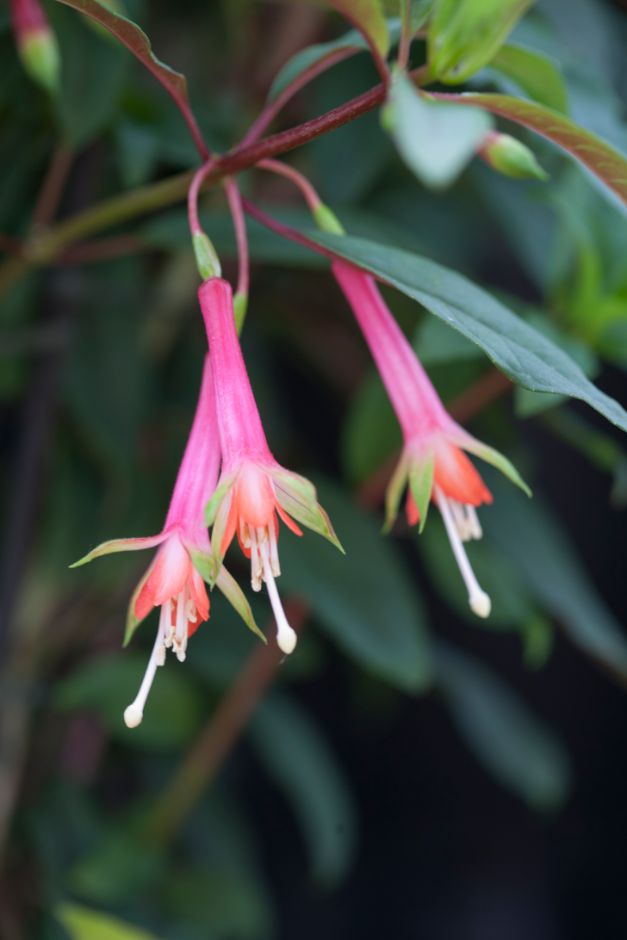Fuchsia denticulata
toothed fuchsia
A species fuchsia, a decidous shrub or small tree about 1.5m tall but may reach 4m, with strong, upright growth and dark green leaves, paler beneath. Pendent clusters of small single flowers often tipped green, have waxy, light reddish pink tubes, pink to light red sepals and orange to scarlet corollas, from summer to autumn

Buy this plant
Size
Ultimate height
2.5–4 metresTime to ultimate height
5–10 yearsUltimate spread
1–1.5 metresGrowing conditions
Moisture
Moist but well–drainedpH
Acid, Alkaline, NeutralColour & scent
| Stem | Flower | Foliage | Fruit | |
| Spring | Green | |||
|---|---|---|---|---|
| Summer | Pink Red | Green | ||
| Autumn | Pink Red | Green | ||
| Winter |
Position
- Full sun
- Partial shade
Aspect
South–facing or East–facing or West–facing
Exposure
Sheltered Hardiness
H2Botanical details
- Family
- Onagraceae
- Native to GB / Ireland
- No
- Foliage
- Deciduous
- Habit
- Columnar upright, Bushy
- Potentially harmful
- Although Fuchsia berries are edible, most are not particularly tasty and are sparsely produced on plants. Fuchsia plants are generally grown as an ornamental and not for fruit crops within the UK
- Genus
Fuchsia can be deciduous or evergreen shrubs or trees, rarely perennials, with opposite or whorled leaves and usually pendent flowers with conspicuous tubular calyx, 4 spreading sepals and 4 erect petals
- Name status
Correct
- Plant range
- Peru, Bolivia
How to grow
Cultivation
Grow in a cool or frost-free greenhouse in a container of peat-free multi-purpose compost in bright indirect light and keep just moist. Reduce watering in winter. See tender fuchsia cultivation for further information
Propagation
Propagate by seed sown at 15-24°C in spring. Root softwood cuttings in spring, or semi-ripe cuttings in late summer with bottom heat
Suggested planting locations and garden types
- Sub-tropical
- Conservatory and greenhouse
Pruning
Pruning group 6; cut back to the base in frost prone areas
Pests
May be susceptible to aphids, capsid bug, fuchsia gall mite, fuchsia flea beetle, glasshouse red spider mite and vine weevil
Diseases
May be susceptible to fuchsia rust, grey moulds and honey fungus (rarely)
Get involved
The Royal Horticultural Society is the UK’s leading gardening charity. We aim to enrich everyone’s life through plants, and make the UK a greener and more beautiful place.